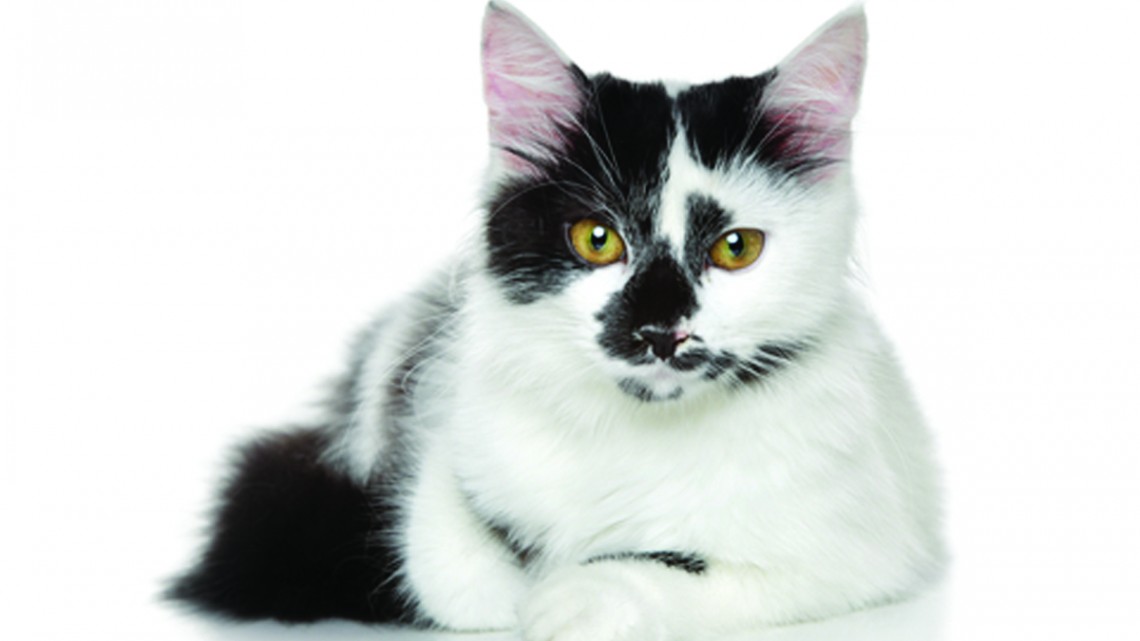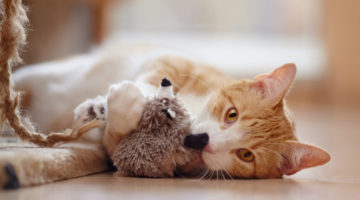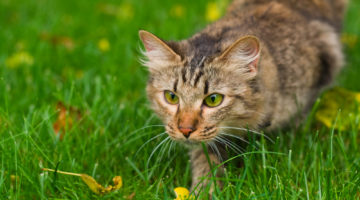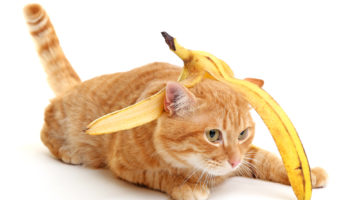Does your cat suck wool sweaters, or chew your blankets or drapes? Before you start thinking he’s crazy, understand that this behavior is quite common and can be corrected.
Cats do the zaniest things. They jump into paper bags, attack shadows, and chase their own tails. Just when you thought you’d seen it all, you discover your feline has developed an obsession for chewing socks, sweaters, towels, blankets, drapes and rugs. Not only does this habit seem odd, it’s also destructive. Anything your cat has gnawed on for more than a few minutes can become shredded and perforated with holes.
What’s up with that?
Animal behaviorists call this “wool sucking”. “It’s a form of displaced nursing behavior,” says Dr. Nicholas Dodman, director of the animal behavior clinic at Tufts University School of Veterinary Medicine. Most often the problem starts in kittenhood, he says, toward the end of infancy or just after weaning.
“The kitten may begin to suck on woolen substrates such as a sweater, and nurse on it until he sucks the wool into a wet tuft,” Dr. Dodman says. Wool is typically the preferred fabric for this type of behavior, but cats will suck on other types of cloth too.
Animal behaviorists believe weaning kittens too early is the main cause of wool sucking. “The oral compulsion to nurse cannot be fulfilled because they’ve been separated from their mother,” says Dr. Dodman. “Instead of nursing on Mom, which is what nature is telling them to do, they find something else to nurse on.”
Other factors also play a role. Wool sucking appears to be a genetically related behavior especially common in Oriental breeds such as Siamese, Burmese and Himalayan cats. Boredom, lack of physical activity, environmental stress and an inadequate diet can exacerbate the problem.
As the kitten enters adulthood, the behavior may wane to something the cat does only occasionally, or it may stop altogether. Other cats, however, remain ardent wool suckers the rest of their lives. While that can certainly put your clothes in jeopardy, wool sucking doesn’t usually hurt your cat.
The problem with pica What is harmful is if the behavior metamorphoses into a more serious habit called pica. “Now, instead of just nursing on the wool, the cat might actually chew on it and ingest parts of it,” explains Dr. Dodman. In addition to consuming fabric, the cat may develop a taste for plastic, rubber and wood, and gnaw on things like shower curtains, plastic shopping bags and rubber boots. This is not something you should ignore.
“If your cat swallows fabric, it can get stuck in his stomach or intestine and cause a blockage,” warns veterinarian Dr. Joanne Howl. This can be life threatening, and requires an emergency trip to the veterinary clinic.
Remember that every cat is an individual. Some are more determined chewers than others. If your cat has made a habit of wool sucking, you will have a greater challenge on your hands than if you have a kitten who just tasted your sweater for the first time. But with consistent and persistent effort (see below), you can keep your cat happy, and keep your clothes and household furnishings intact.
Animal behaviorists believe weaning kittens too early is the main cause of wool sucking.
6 Steps to Stop Wool Suckers
You don’t want your possessions damaged, nor do you want your cat hurting himself because he consumed something inedible. These steps can help curb your cat’s wool sucking habit.
1 Add roughage to the diet Many veterinarians recommend adding roughage to your cat’s diet. Try sprinkling wheat, oat bran or canned pumpkin on his food. Or offer some crunchy treats such as Romaine lettuce, green beans, cooked potato skins or popcorn. “That should get your cat’s mind off wool and satisfy his need to chew,” says Dr. Howl.
2Provide a more stimulating environment If you think your cat is wool sucking because he’s bored, try to create a more enriching environment. “Make sure your cat is getting plenty of exercise,” Dr. Howl suggests. “If possible, set aside several times a day to play with your cat.” Scattering healthy treats throughout the house for your cat to find, placing his ledge by a window, and providing independent play toys like tunnels will help keep him entertained while you’re away.
3Remove temptation If there are certain items you know your cat can’t resist chewing, put them out of his reach. “Place blankets, sweaters and other woolen clothing away in dresser drawers or closets and keep the doors closed so your cat can’t get inside,” suggests Dr. John Wright, a certified animal behaviorist with Mercer University. If your cat has made a habit of getting into the laundry hamper, buy one with a childproof latch or tie down the lid.
4Create a distraction Whenever you catch your cat in the act of sucking something he shouldn’t, disrupt his behavior with a firm “no” and make a loud noise – clap your hands, shake a can filled with pennies, or slap a ruler on the countertop. “Doing so won’t hurt your cat, but will startle him and make him stop what he’s doing,” Dr. Wright says. When your cat stops sucking on the item, immediately offer him a safe cat toy that is okay for him to chew on. When he gnaws on that instead, praise him to reinforce that behavior.
5 use remote corrections To protect your clothes when you’re not around, install remote corrections in front of your closet, such as a motion detector, which sounds an alarm or blows a puff of air when the cat crosses the electronic beam. “When your cat experiences the alarm, he will get startled and back off or run away from the closet,” Dr. Wright says. “Eventually, he’ll think: ‘forget it.’”
6Get professional help If you’re having no success curbing your cat’s behavior, seek the advice of your veterinarian or a feline behavior consultant.







No Comment